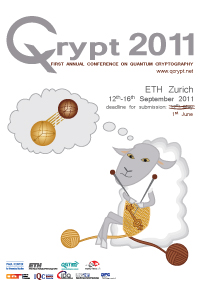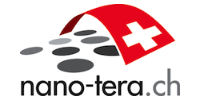|
|||||||||||
Detailed link analysis of satellite quantum communication
Jean-Philippe Bourgoin, Evan Meyer-Scott, Bassam Helou and Thomas Jennewein (Institute for Quantum Computing, University of Waterloo)
Quantum key distribution (QKD) is the first application of quantum entanglement to reach the level of technology to be commercially implemented, yet it remains limited by distance. This is due to the exponential scaling of the losses in fiber. To overcome this limitation, it is necessary to move to satellites. The advantage of QKD is that it is the only way to securely distribute a completely random key. This random key is necessary to implement the one-time pad cryptography scheme, the only cryptographic scheme that is proven to remain secure regardless the computational power, even with quantum computers. In addition to the security benefit of satellite quantum cryptography, there is also a lot of scientific interest in experiments using entanglement in space.
This talk will present the results of a detailed link analysis of the feasibility of satellite quantum cryptography. We consider various orbit configurations particularly low earth orbit (LEO), Geostationary orbit (GEO). We discuss the single downlink configuration where the loss from atmospheric turbulence is negligible, reducing losses, but for which the source is on the satellite therefore increasing the costs. Single uplink configuration is also discussed where the added loss from atmospheric turbulence increases the cost but allow for a simpler design and the ability to modify the source which would be on the ground. Because single links would require the satellite to be a trusted node, double links are also presented which would allow QKD from an un-trusted satellite. We also consider both weak coherent pulse (WCP) source of photons and entangled photon source.
The main focus of the talk will be a detailed analysis of the satellite link. This will include orbit analysis over a year for which we calculate numerically losses and background. The losses are incorporate diffraction, atmospheric turbulence and transmission, pointing accuracy, detector efficiency and typical optical losses from coupling. The background includes natural light sources (moon, stars, etc.) and human activity. The results are then used to determine numerically the expected quantum bit error rate (QBER) and count rate at each instant during the satellite’s passes. These complex numerical simulations allow us to obtain the secure key length for each passes of satellite and thus determine the performance that satellite QKD would give. This is done for many parameters including telescope sizes, wavelength, location, source, etc.
We will present our results which show that single link from LEO are currently possible. A single downlink could be performed using 5-10 cm telescopes on the satellite and a single uplink with 30-40 cm telescope on the satellite with possible improvements using adaptive optics. We also show that double links would not allow sufficient coverable distance to be of interest. In addition, we present results from GEO where the high loss makes QKD difficult with current technologies but would offer better performance than LEO. We also show that, with future technological developments, GEO could be used to implement a long distance double link allowing global QKD with an un- trusted satellite.
Wichtiger Hinweis:
Diese Website wird in älteren Versionen von Netscape ohne
graphische Elemente dargestellt. Die Funktionalität der
Website ist aber trotzdem gewährleistet. Wenn Sie diese
Website regelmässig benutzen, empfehlen wir Ihnen, auf
Ihrem Computer einen aktuellen Browser zu installieren. Weitere
Informationen finden Sie auf
folgender
Seite.
Important Note:
The content in this site is accessible to any browser or
Internet device, however, some graphics will display correctly
only in the newer versions of Netscape. To get the most out of
our site we suggest you upgrade to a newer browser.
More
information







